Is there a way to specify bin sizes in MySQL? Right now, I am trying the following SQL query:
select total, count(total) from faults GROUP BY total;
The data that is being generated is good enough but there are just too many rows. What I need is a way to group the data into predefined bins. I can do this from a scripting language, but is there a way to do it directly in SQL?
Example:
+-------+--------------+
| total | count(total) |
+-------+--------------+
| 30 | 1 |
| 31 | 2 |
| 33 | 1 |
| 34 | 3 |
| 35 | 2 |
| 36 | 6 |
| 37 | 3 |
| 38 | 2 |
| 41 | 1 |
| 42 | 5 |
| 43 | 1 |
| 44 | 7 |
| 45 | 4 |
| 46 | 3 |
| 47 | 2 |
| 49 | 3 |
| 50 | 2 |
| 51 | 3 |
| 52 | 4 |
| 53 | 2 |
| 54 | 1 |
| 55 | 3 |
| 56 | 4 |
| 57 | 4 |
| 58 | 2 |
| 59 | 2 |
| 60 | 4 |
| 61 | 1 |
| 63 | 2 |
| 64 | 5 |
| 65 | 2 |
| 66 | 3 |
| 67 | 5 |
| 68 | 5 |
------------------------
What I am looking for:
+------------+---------------+
| total | count(total) |
+------------+---------------+
| 30 - 40 | 23 |
| 40 - 50 | 15 |
| 50 - 60 | 51 |
| 60 - 70 | 45 |
------------------------------
I guess this cannot be achieved in a straight forward manner but a reference to any related stored procedure would be fine as well.

